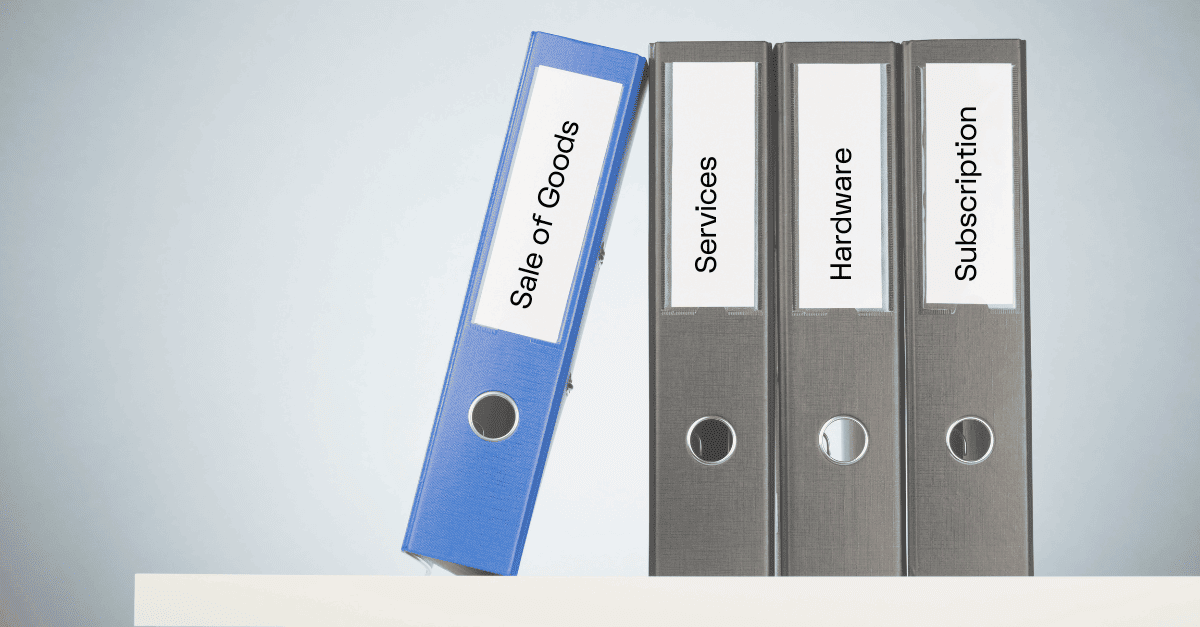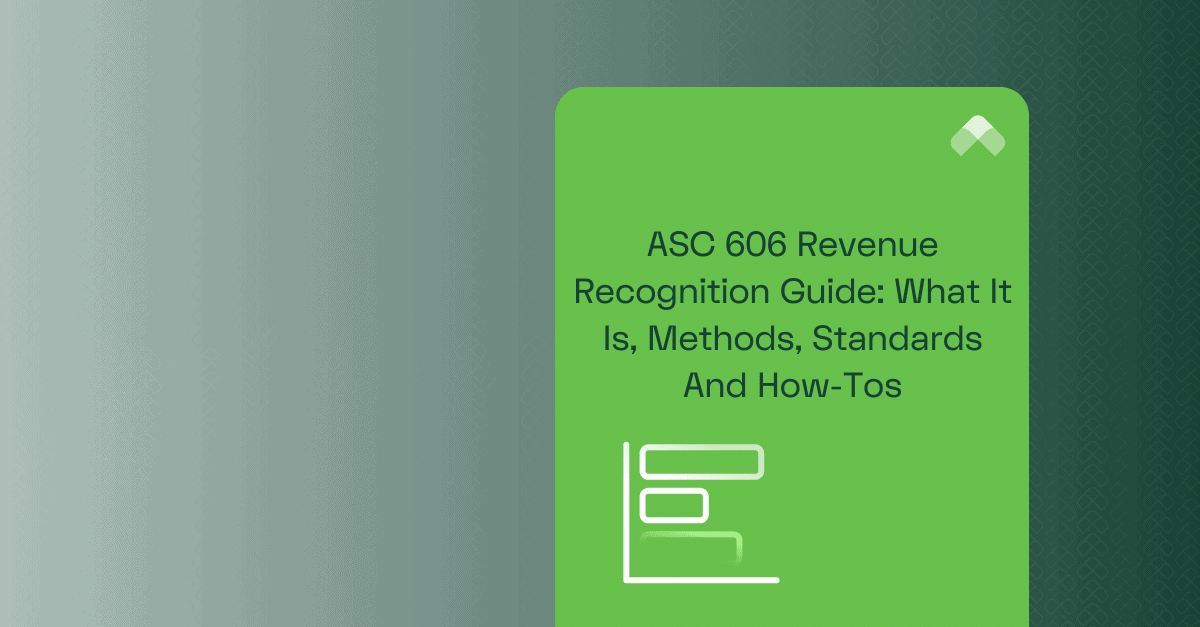Following GAAP is required whether you’re a public business, a non-profit, or a government entity. GAAP and revenue recognition—the process of attributing and reporting revenue to the right accounting period—are core principles to follow.
But this begs the question: What is GAAP and what are its revenue reporting requirements?
Generally Accepted Accounting Principles (GAAP) standardize the classifications, assumptions, and procedures American accountants use. Revenue recognition is an essential component, as mentioned. However, GAAP revenue recognition criteria are complex and consistently evolve to keep up with emerging revenue models.
Despite how difficult it can be for modern companies to accurately recognize revenue, proper revenue recognition is still mandatory for GAAP compliance. To that end, let’s unpack GAAP so your organization can avoid the penalties and pitfalls of misreporting.
Understanding GAAP Revenue Recognition
GAAP is a dynamic set of standards issued by the Financial Accounting Standards Board (FASB). While the FASB is a private, non-governmental organization, the United States Securities and Exchange Commission (SEC) recognizes it as the country’s designated accounting standards setter for private companies.
GAAP covers several different accounting practices, including:
- The classification of assets, liabilities, and equity on balance sheets
- Materiality, or the accurate disclosure of financial statements and data to inform investors’ decision-making
- Revenue recognition standards
GAAP contains many specific rulesets, and the FASB consistently updates its standards. Revenue recognition practices, in particular, have been updated nearly ten times in as many years, with the latest principles coming out as recently as 2023.
Despite their relative newness and complexity, it’s essential to follow the latest standards set by the FASB for accurate revenue recognition. This ensures your financial statements show the right revenue in the correct periods, accurately inform your investors of your financial health (the materiality above), and provide the insight you need to run a profitable, prosperous business.
Key Principles of Revenue Recognition
The FASB sets forth various principles governing the revenue recognition process. The most important principles are to understand and comply with them.
Identifying the Contract with a Customer
Contracts identify the terms and rights each party (the seller and buyer) establishes during a business transaction, including:
- The goods or services to be transferred
- The payment date, amount, and terms
- The length, validity, and termination date of the agreement
Contracts can be written, oral, or implied (depending on the customary practices of your area) and serve as the basis for accurate reporting throughout your business relationship.
Identifying Performance Obligations
Your performance obligations can include:
- A distinct product or service you’ve promised to deliver to your client
- A series of distinct products or services you’re committed to delivering
A singular commitment to deliver a series of services or products over a given period—say, one unit per month for a year—would be considered a combined obligation. Alternatively, related but separate performance obligations (such as goods or services delivered under different agreements) can be viewed as distinct.
Determining the Transaction Price
You’d think that transaction prices would be cut and dry based on the terms of your contract, but the actual amount to pay can be:
- Fixed
- Variable
- Influenced by both fixed and variable factors
So, determining a transaction price may not be possible until a performance obligation is completed. If, for instance, you provide on-demand digital services, your transaction price may be based on actual usage (i.e., consumption) over a given payment period. Thus, transaction prices must be calculated, collected, and allocated based on the actual delivery of goods or services.
Allocating the Transaction Price
When your transaction price is allocated, you determine and attribute the money for goods or services rendered to the right payment period. Allocation should align with the specifics of your performance obligations—meaning revenue should be attributed to:
- The period in which goods or services were delivered to complete your performance obligation
- The end-point of your established contract
- When your client stops purchasing your goods or services
Whether you use over-time recognition, such as annual reporting periods, or point-in-time recognition, such as the final dates of contracts, each revenue stream must be individually recognized upon the satisfaction of its associated performance obligation.
Over-time recognition, such as annual reporting, doesn’t need to stick to the standard calendar—annual reporting periods beginning mid-year, for instance, will end on the same date the following year.
Recognize Revenue When the Entity Satisfies a Performance Obligation
When an entity satisfies a performance, recognizing revenue ensures that revenue is recorded to reflect the actual transfer of goods or services to customers. The core idea is that revenue should be recognized when control of these goods or services passes to the customer, either over time or at a specific time.
Revenue is recognized based on when the performance obligation is satisfied over time:
- The customer receives and consumes benefits as the entity performs
- The entity’s performance creates/enhances an asset controlled by the customer
- The entity’s performance does not create an asset with an alternative use, and the entity has an enforceable right to payment for work completed
If the obligation is not satisfied over time, it is recognized when control is transferred at a specific point in time, indicated by factors like legal title, physical possession, or the risks and rewards of ownership shifting to the customer.
Criteria for Revenue Recognition
We must consider the following to accurately recognize revenue and attribute it to the right periods and places on the balance sheet.
Collectibility
For revenue to be properly recognized, it has to be:
- Probable that the owing party will follow through with their payments
- Receivable in full— otherwise, you should only recognize the portion of revenue likely to be collected
- Partial payment from a terminated contract that won’t be renewed
Delayed or partial payments and uncollectible debts can confuse revenue recognition and make it difficult to determine what period (if any) to attribute a latent or incomplete revenue stream to.
Performance Obligations
As mentioned, revenue is accurately allocated to the period you complete your performance obligations. For modern businesses, however, this isn’t always cut-and-dry.
For instance, software as a Service (SaaS) companies may offer their products on an annually renewing, subscription-based plan. In such cases, it can be difficult to pinpoint the satisfaction of performance obligations when contracts continue indefinitely.
So, it’s pertinent to use time-based billing cycles (such as monthly or annual renewals) to determine the completion of performance obligations.
Variable Consideration
Modern pricing structures contain several variable considerations to keep in mind, including:
- Volume discounts
- Rebates
- Performance bonuses
- Refunds
- Incentives
- Credits
- Royalties
- Milestone payments
- Price concessions
GAAP requires you to approximate the worth of variable considerations for financial reporting using one of two estimations that best predict their actual value:
- The expected value
- The most likely amount to be paid
Accounting experts must consider constraints or revenue portions likely to be returned after a purchase. If a revenue stream has less than a 75% chance of being fully realized, adjust your financial statements to omit it.
Licensing and Intellectual Property
When recognizing revenue earned from the intellectual property you license out, GAAP dictates that you must:
- Consider the nature of their licensing promise (whether it’s “Right to use” or “Right to access”) when determining the specifics of your performance obligations
- Consider each separate licensing agreement—including those distinguished by time, geography, or partial licensing of a product— as distinct performance obligations
- Not recognize revenue from licensing renewals until the beginning of the renewal period
Common Challenges in Revenue Recognition for SaaS Companies
SaaS companies leverage a variety of pricing structures to make their products more appealing to their base. While this is a savvy marketing tactic, it can complexify revenue recognition by creating multiple performance obligations within singular contracts. For example, it’s not uncommon for SaaS contracts to include the SaaS software itself, an implementation services fee, and an ongoing support fee.
Similarly, subscription-based revenue models often have no fixed end dates—making it difficult to determine when to properly recognize their revenue. Add in contract modifications (like upgrades, downgrades, add-on products, etc.), refunds, and cancellations, and you’ve got a lot of complex, tedious work falling into the laps of SaaS revenue accountants.
How Revenue Recognition Software Can Help
Robust revenue recognition software can save your accounting team significant time, instead of sorting through all of the contract terms manually to determine when and how much revenue to recognize. Likewise, it can save you from lofty penalties and unwanted legal trouble.
Revenue recognition software ensures compliance with the FASB’s ASC 606 framework governing revenue recognition. Leading solutions also account for the International Accounting Standards Board’s (IASB) International Financial Reporting Standards (FRS) 15 guidelines.
Automate Accounting Processes and Maintain Strict GAAP Compliance With RightRev
GAAP Revenue recognition dictates evaluating, allocating, and recognizing revenue streams. Essentially, you must attribute revenue to the accounting period in which you fulfilled your performance obligations.
Adherence to GAAP is necessary for public companies, non-profits, and government entities to avoid legal penalties and potential fines. However, more and more private companies are following GAAP standards to prepare for M&A activities, IPOs, and comparability amongst their peers for investors. Luckily, when you partner with RightRev, maintaining GAAP compliance is built-in.
RightRev is a leading automation software for companies seeking to streamline revenue recognition processes and maintain GAAP compliance. What’s more, RightRev can provide certain GAAP reports—like revenue/deferred revenue waterfalls, LT/ST reports, asset/liability reports, and more—out-of-the-box, making reporting requirements faster and easier to obtain.
Request a demo and start recognizing revenue faster, with less need for manual input and with strict adherence to legal principles.




